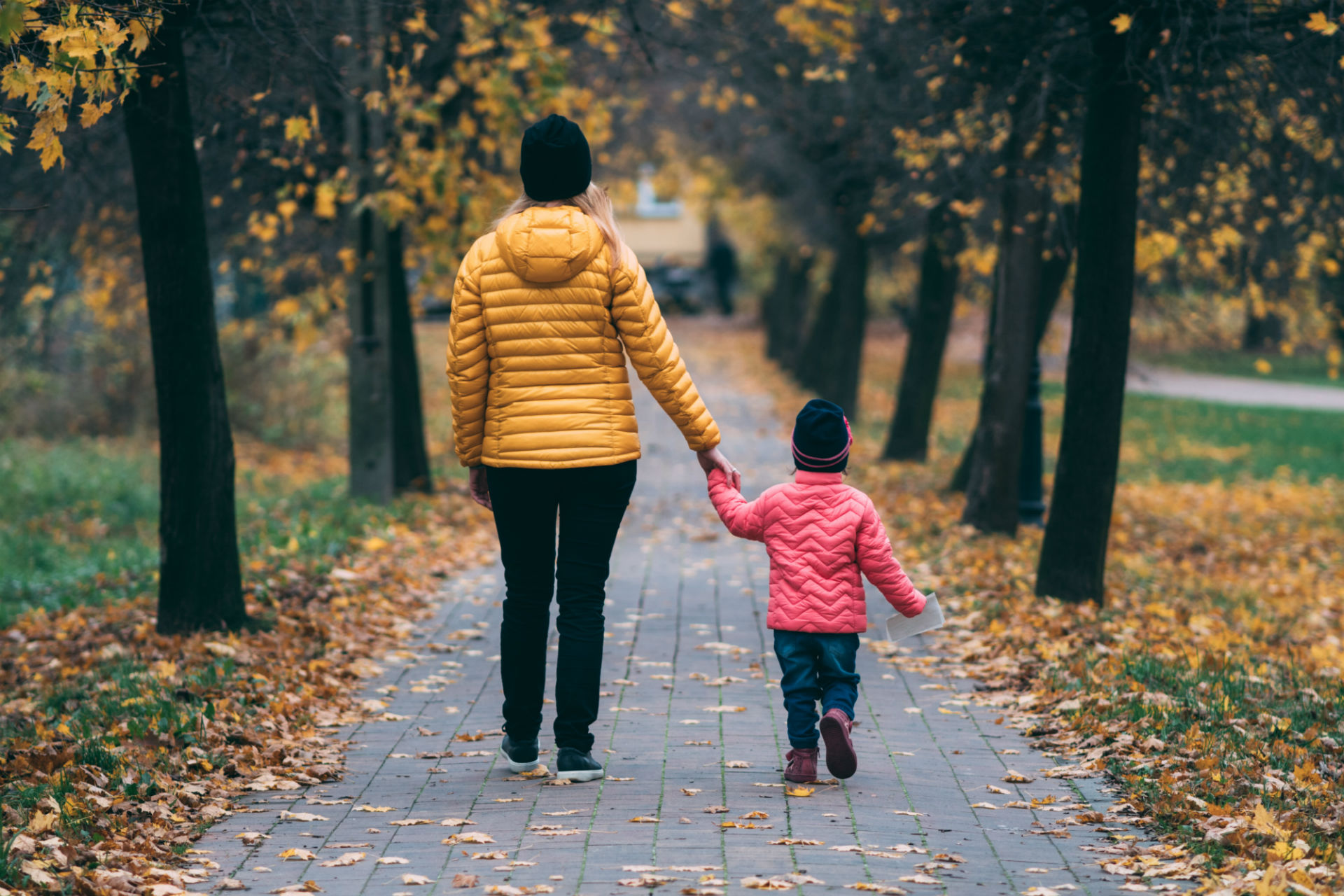School
4 min Read
Why you should increase how often you walk your kids to school

August 24, 2023
School
4 min Read

August 24, 2023

Just before our older daughter started junior kindergarten, the school up the road closed. Luckily for us, its student body was absorbed by another school further afield, but still only 900 metres away. It’s an 11-minute walk, according to Google Maps, but with kids in tow, maybe 15. (For fun, I looked up how far I used to have to walk to school and it’s exactly twice as far, even though in my mind it took what seemed like 20 minutes.)
But times have changed since I was a kid, and in fact they’ve been changing for longer than that. Really, since the start of the last century, our society started to accelerate toward today’s car culture, a culture stitched into the way our cities and regions look, and how we move around, says Ron Buliung, a geography professor at the University of Toronto. It also got me thinking in general. As parents, should we increase how often we walk our kids to school?
Ron’s been researching active school transport for years (defined primarily as walking and cycling). There are many reasons for this decline in walking, says Ron. Even though schools are still built and found within residential neighbourhoods, most jobs are not. And many families have two parents working outside the home. So it’s common for families to be in a hurry in the morning and afternoon, so they drive to and from a school that is within a reasonable walking distance.
Guilty as charged. The 900 metres to our junior school were accomplished much more quickly in the car, before I continued to work. That’s about seven more minutes of time to get ready. “And that’s huge, for time-strapped parents dealing with far-flung commutes and busy personal and child-related schedules,” says Ron. “But we have to look at why we’re so rushed. Because of inflexible employers?” Not to mention jam-packed after-school and evening schedules.
There were mornings when we did walk. A few times we even towed the girls on a toboggan. And we rallied around the so-called “walking buses” (groups of kids escorted by one parent) and Walk to School Weeks every year. But we noticed a huge improvement in our kids’ moods when, by the time our oldest was in Grade 5, they started walking themselves home. That little chunk of time to decompress made the pre-dinner hours much smoother.
The positive connection between physical activity and mood has long been proven, and recent studies link walking to school and improved academic performance.
Yet the car culture persists. Ron says there is a perception that kids are safer in a car, yet statistics show kids are more likely to be injured in an accident while in a car rather than as a pedestrian. And of course, more cars on the road can actually increase the odds of a car accident, while decreasing pedestrian safety.
Setting aside the apprehensions of letting kids walk on their own, there is merit to taking the time to walk or bike to school with our kids from a young age, if not every day, then sometimes. Setting these habits early when our kids are little will go a long way to instilling in our kids that walking or biking could be our first choice.
Buliung’s past study looked at children 11 to 13 and 14 to 15 living in the Greater Toronto Area, which includes Toronto, Durham, York, Peel and Halton. In 1986, 53 percent of children 11 to 13 walked to school; in 2006 it was 42.5 percent. Car ridership doubled in the same time period from 14.6 percent in 1986 to 29.2 percent in 2006. (The trip home was slightly better with more kids walking and less kids getting a ride.)
The data collected was for older children, but says Ron, it is likely the same or worse for younger children who are more reliant on adults accompanying them. In other words, kids who are used to walking from a young age are not likely to suddenly change their stripes at age 11.
Other Western countries have had similar increase in car usage and decrease in walking or cycling to school (although the decrease has stabilized in the US and UK in recent years).
Originally published in ParentsCanada magazine, Aug/Sep 2016.